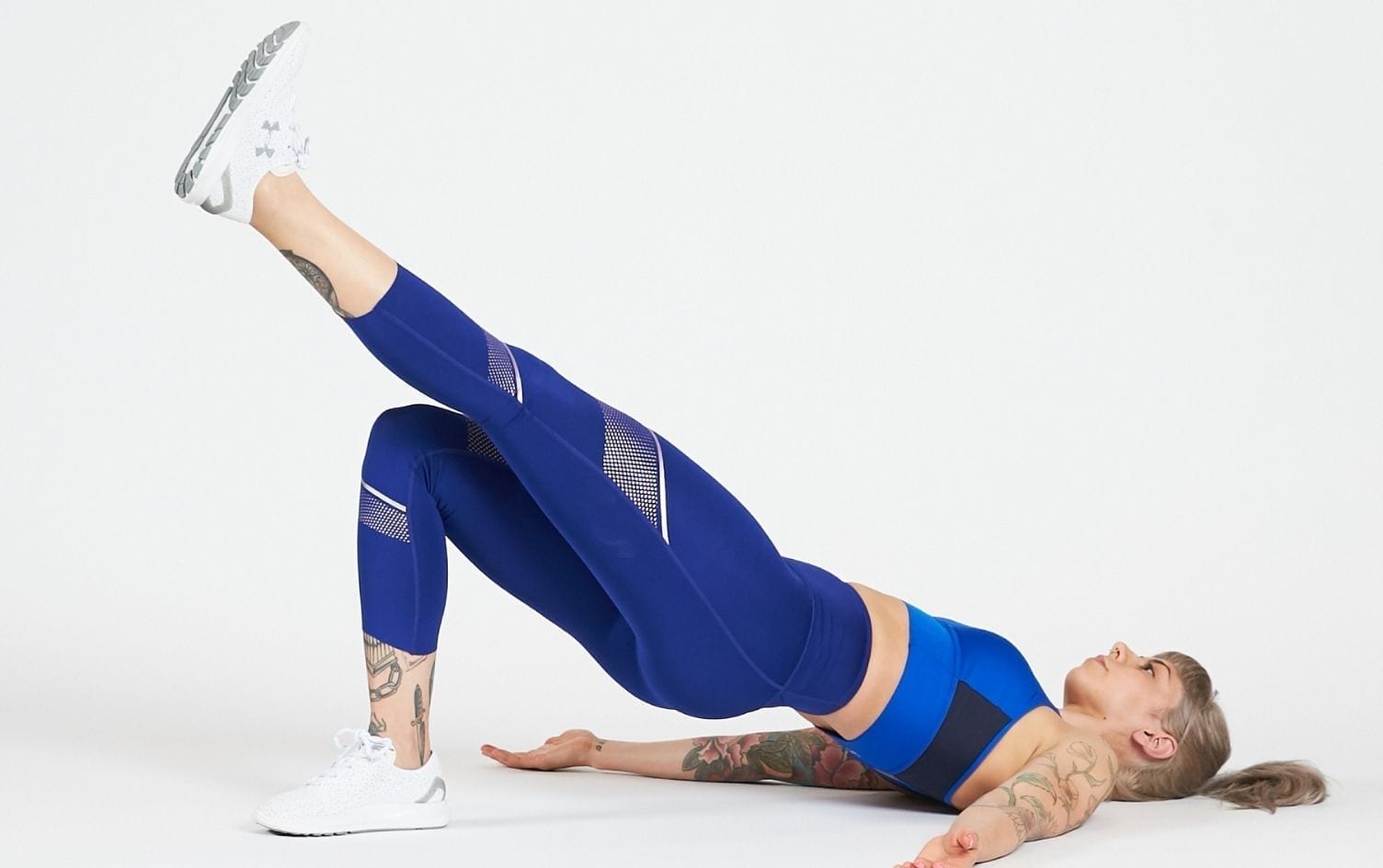Not ready to go back to the gym just yet? No worries. You can create effective strength routines in the comfort of your home.
The first step in designing an at-home strength workout is to select your exercises. Choose moves you can do with the equipment you have available if any. Keep in mind bodyweight exercises are always an effective option.
Or, see if you can add equipment to your home fitness toolbox. Consider portable options like gymnastic rings, a suspension trainer, resistance bands (including mini bands), a doorway pullup bar, adjustable bench or adjustable weights.
Assuming you’re planning a full-body strength routine, you’ll want to include a variety of exercises. To ensure you hit all your major muscle groups, Nehemiah Owusu, personal trainer and nutrition coach at Life Time in Plymouth, Minnesota, advises choosing at least one exercise from each of the five movement categories:

Upper body push exercises primarily target the muscles you use to press weight away from your body: your chest, triceps and the front of the shoulders. Choose between exercises like pushups, dips, chest presses, shoulder presses, triceps extensions and other variations of these moves.

Movements in the upper body pull category home in on muscles that bring the weight toward your body: your back, biceps and the backs of the shoulders. Great upper body pull exercises include pullups, straight-arm pulldowns, rows, bicep curls, flys and all their variations.

Lower body push exercises emphasize the muscles that push weight away using mostly the knees, working mainly your quads and glutes. Choose from goblet squats, walking lunges, back squats, stepups, reverse lunges, Bulgarian split squats and other variations.

Target the glutes and hamstrings with lower body pull exercises. These muscles light up whenever you bring weight toward your body using mostly the hips, as in exercises like dumbbell deadlifts, glute bridges, hip thrusts, fire hydrants and single-leg Romanian deadlifts.

Select exercises that target your midsection, which includes planks, side planks, hanging knee raises, situps, Pallof presses, Russian twists and other variations.
MIX AND MATCH YOUR STRENGTH WORKOUT
If you choose just one exercise from each category, you’ll score a solid full-body routine.
However, feel free to incorporate 1–3 additional exercises from any of the five movement categories if there are areas you want to work on, Owusu says.
For example, if you’re hoping to build up your glutes, add an extra lower body push or pull exercise (or both!). If you want more core work, tack on one or two more exercises from that category. Just remember, “quality over quantity is most important,” Owusu says. Don’t pile on more exercises if your muscles are too tired to do them with proper form.
Aim for anywhere between 3–5 sets of 5–15 reps for each exercise. “For general strength and fitness, you can start with one exercise from each category and complete 3 sets of 10 repetitions of each,” Owusu says. As you gain strength and experience, you can add sets and lift heavy enough to tap out around the five-rep mark.
Modify the exercises as-needed so you can complete every set with good form. This may mean elevating your hands or dropping to your knees to do pushups or using a doorframe or railing to help you balance during single-leg deadlifts.
When selecting a weight, the American College of Sports Medicine (ACSM) recommends going for a load that feels like an 8 on a difficulty scale of 0–10 (where zero equals no effort, and 10 is maximum effort).
SAMPLE WORKOUT
Here’s a sample routine from Owusu you can try. After a dynamic warmup, do the following exercises for three sets of 10 reps (per side):
- Upper body push: Shoulder tap pushups
- Upper body pull: Band-assisted pullups
- Lower body pull: Single-leg hip thrust
- Lower body push: Dumbbell or kettlebell front rack reverse lunge
- Core: Hanging knee raises
Take Owusu’s routine as inspiration and have fun designing your own strength routines during the week.
PUSHUP

The move: Set up in a high plank: Hands directly under shoulders, and body in a straight line from head to heels. Brace your core and bend at the elbows to touch your chest to the floor. Push back up. To up-level to a shoulder tap pushup: Keeping your body rigid, lift one hand off the floor and tap your opposite shoulder. Bring your hand back to the floor and repeat with the other hand. That’s one rep.
BAND-ASSISTED PULLUP

The move: Loop a resistance band around a pullup bar. Step onto the loop with one or both feet, using a bench if needed. Hang from the bar palms-out, so your arms and legs are fully extended, feet off the floor. Draw your shoulder blades in toward your spine and pull yourself to the top of the bar. Lower down with control until your arms and legs are fully extended again.
SINGLE-LEG HIP THRUST

The move: Sit on the ground and rest your upper back against a stable bench or chair. Knees should bend with feet flat on the floor. Push through one foot to lift your opposite foot off the floor and press your hips as high as possible without arching your back. Keep your upper back in contact with the bench or chair. Squeeze your glute before lowering your hips back to the floor. Complete all reps on one side before switching to the other.
DUMBBELL OR KETTLEBELL REVERSE LUNGE

The move: Stand tall with feet hip-width apart. Hold a dumbbell or kettlebell in front of each shoulder, elbows bent, palms facing each other. Brace your core and step back with one foot. Keeping your weight in your front leg, bend your front knee to lower your hips toward the floor. Return to the start and repeat. Complete all reps on one side before switching to the other.
HANGING KNEE RAISE

The move: Hang from a pullup bar palms-out, with your arms and legs fully extended, shoulders down and feet off the floor. Brace your core and raise your knees toward your midline, taking care not to round your lower back. Return to start position.
Check out “Workout Routines” in the MyFitnessPal app to discover and log workouts or build your own with exercises that fit your goals.




